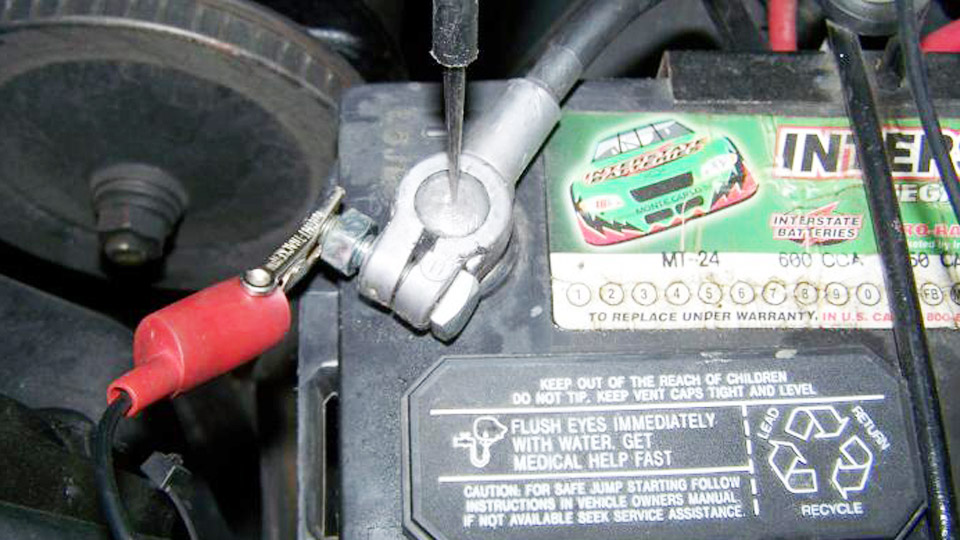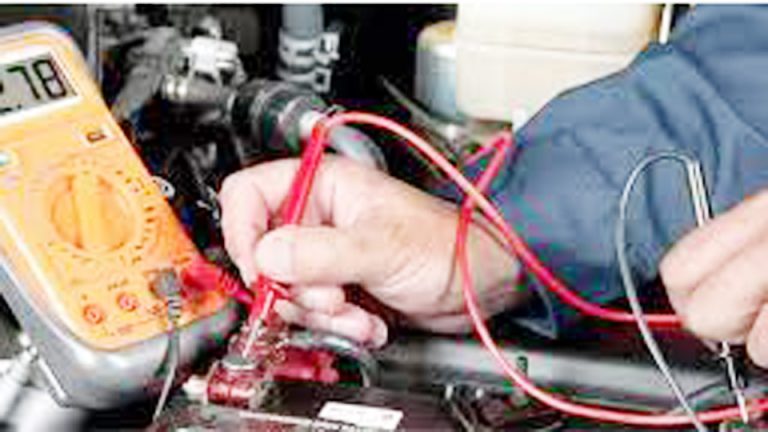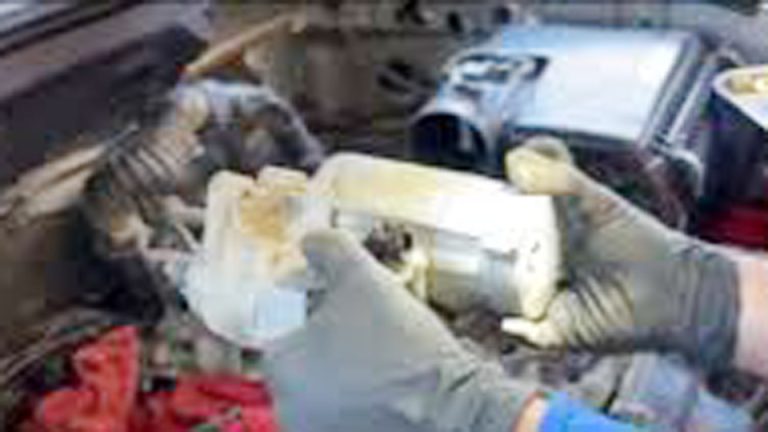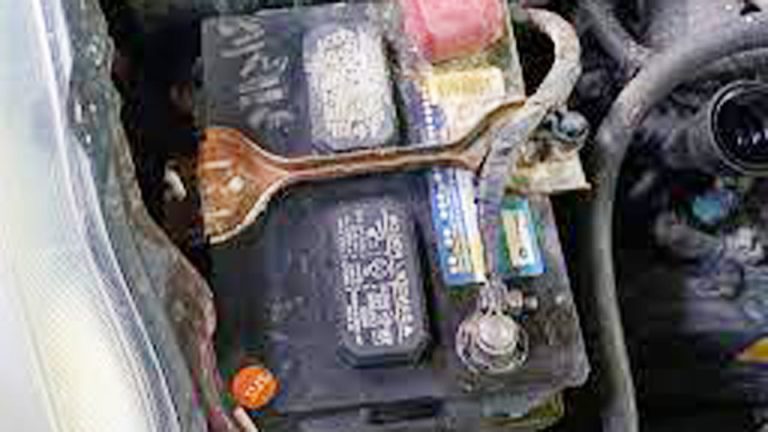I still remember the headache I had trying to figure out why my car battery kept dying overnight. I replaced the battery, checked the alternator, and even tested for parasitic draws—but the problem persisted.
That’s when a mechanic buddy suggested something I hadn’t considered: the starter might be causing the battery drain. Honestly, I didn’t even know that was possible. But after testing it myself, I found out he was right—and fixing it finally solved the issue.
If you’ve been chasing an unexplained battery drain and everything else checks out, your starter could be the silent culprit. Testing it isn’t as complicated as it sounds—once you know what to look for.

Photo by honda-tech
I’ll walk you through how I tested my starter for battery drain using simple tools and a step-by-step process that anyone can follow. Whether you’re a weekend DIYer or just tired of jump-starting your car, this could be the fix you’ve been searching for.
Why a Starter Might Drain Your Battery
Before we dive into testing, let’s talk about why a starter motor might be draining your battery. The starter is a small electric motor that cranks your engine to get it running. When you turn the key, a solenoid (a magnetic switch) pushes a gear into the engine’s flywheel, and the motor spins to start the combustion process.
Normally, the starter only draws power for a few seconds during startup, but a faulty one can pull power even when the car’s off. Here’s how it happens:
Stuck Solenoid: If the solenoid stays engaged, it keeps the starter running, draining the battery fast. I saw this on a buddy’s Toyota Corolla—the battery was dead in a day.
Short Circuit: A short in the starter’s wiring or windings can create a constant electrical draw, like leaving your headlights on.
Worn Components: Worn brushes or bearings can make the starter work harder, pulling more power and stressing the battery.
Faulty Relay: The starter relay, which controls power to the starter, can stick and cause a drain.
I once had a neighbor whose Chevy Malibu’s battery kept dying. We traced it to a stuck solenoid that was pulling power all night. Testing it saved him from buying a new battery he didn’t need.
Tools You’ll Need
You don’t need a pro mechanic’s toolbox to test for battery drain. Here’s what I keep handy for jobs like this:
- Multimeter (for checking voltage and current).
- Wrench or socket set (to disconnect battery cables).
- Screwdriver (for accessing the starter or fuse box).
- Wire brush or sandpaper (for cleaning terminals).
- Gloves and safety glasses (to stay safe).
- Optional: Jumper cables (for testing battery health).
I’ve done these tests in parking lots with just a multimeter and a wrench, so don’t worry if your setup’s basic. If you don’t have a multimeter, you can grab a decent one for $20–$50 at an auto parts store.
Step-by-Step Guide to Testing a Starter for Battery Drain
Let’s get to the main event: how to test a starter for battery drain. This is the process I follow when I suspect the starter’s the problem. It’s straightforward, but take your time to avoid mistakes.
Step 1: Check the Battery Health
A weak battery can mimic a starter drain, so start here. I’ve made the mistake of blaming the starter when the battery was the real issue. Use a multimeter to check the battery’s voltage with the car off. It should read around 12.6 volts for a fully charged battery.
If it’s below 12 volts, charge it or jump-start the car and retest. If the battery keeps dying after a full charge, you’re likely dealing with a drain.
I once spent an hour troubleshooting my Ford F-150’s dead battery, only to realize it was old and couldn’t hold a charge. A new battery fixed it, but I still checked the starter to be sure.
Step 2: Listen for Starter Symptoms
Turn the key and listen. Here’s what different sounds mean:
- Single Click: The solenoid’s engaging, but the motor isn’t turning. Could be a stuck solenoid or worn brushes.
- Rapid Clicking: Usually a weak battery, not a starter drain.
- No Sound: The solenoid or relay might not be getting power, possibly causing a drain if stuck.
- Grinding Noise: The starter’s gear might be damaged, but this usually doesn’t cause a drain.
When my sister’s Hyundai Elantra wouldn’t start, I heard a faint click. Testing showed the starter was pulling power even when off, pointing to a solenoid issue.
Step 3: Test for Parasitic Drain
A parasitic drain is when something pulls power when the car’s off. The starter’s a common suspect. Here’s how I test it:
- Turn off all accessories (lights, radio, etc.) and make sure the car’s off.
- Disconnect the negative battery cable.
- Set your multimeter to DC amps (10A or 20A setting).
- Connect the multimeter between the negative battery terminal and the disconnected cable.
- Wait a few minutes for the car’s electronics to settle. A normal reading is under 50 milliamps (0.05 amps).
- If the reading’s higher, there’s a drain.
I tested a Dodge Ram this way and got a 2-amp draw—way too high. That led me to the starter, which we’ll isolate next.
Step 4: Isolate the Starter
To confirm the starter’s causing the drain, pull the starter relay from the fuse box (check your owner’s manual for its location). Retest the parasitic drain. If the draw drops to normal (under 50 milliamps), the starter or its circuit is the problem. If not, the drain’s elsewhere, like a stuck light or faulty radio.
I did this on a Nissan Altima and saw the draw disappear when I pulled the starter relay. That told me the starter was the culprit.
Step 5: Inspect the Starter’s Connections
Loose or corroded connections can cause the starter to draw extra power. Check the wires at the starter (usually near the engine’s bottom, bolted to the transmission). Here’s what I do:
- Disconnect the battery’s negative terminal for safety.
- Locate the starter and check its positive and negative cables for corrosion or looseness.
- Clean terminals with a wire brush or sandpaper and tighten with a wrench.
- Reconnect the battery and retest for parasitic drain.
I fixed a battery drain on a Toyota Tacoma this way. The starter’s positive cable was corroded, causing a small but constant draw.
Step 6: Test the Starter Directly
If the drain persists, test the starter itself. This requires removing it, but it’s worth it to confirm the issue. Here’s my process:
- Remove the starter (usually 2–3 bolts and a few wires—check your car’s manual).
- Set your multimeter to continuity mode.
- Test between the starter’s positive terminal and its case (ground). If there’s continuity, there’s a short, and the starter’s draining the battery.
- Test the solenoid by connecting the multimeter to its power and ground terminals. No continuity means a bad solenoid.
I found a short in a Chevy Malibu’s starter this way. It was pulling power even when off, and replacing it fixed the drain.
Fixing a Starter-Related Battery Drain
If you’ve confirmed the starter’s draining the battery, you might be able to fix it without replacing the whole unit. Here are some repairs I’ve done:
Clean the Connections
Corrosion or loose wires can cause a drain. Clean the starter’s terminals with a wire brush and electrical contact cleaner. Tighten all connections. I fixed a Honda Accord’s drain this way in 20 minutes—no parts needed.
Rebuild the Solenoid
A stuck solenoid can keep the starter engaged. Remove the starter, detach the solenoid, and clean the plunger and contacts with sandpaper. Test for continuity. If it’s bad, a new solenoid costs $20–$50. I rebuilt one on my Civic, and it stopped the drain for another year.
Replace Worn Brushes
Worn brushes can cause excessive power draw. Open the starter’s end cap, check the brushes (small carbon blocks), and replace them if they’re under 1/4 inch ($10–$30). I swapped brushes on a Toyota Camry, fixing both the drain and weak cranking.
Replace the Starter Relay
A faulty relay can cause a drain. Swap it with an identical relay (like the horn relay) and retest. A new relay costs $10–$20. I fixed a Nissan’s drain this way in 15 minutes.
When to Replace the Starter
If there’s a short in the motor, burnt windings, or stripped gears, the starter’s done for. I tried fixing a starter on a high-mileage Ford Focus, but a shorted winding meant replacement was the only option. A new or remanufactured starter costs $75–$500, plus $100–$500 for labor if you go to a shop.
Here’s a cost breakdown based on my experience:
| Fix | Cost (Approx.) | Time Needed | DIY Difficulty |
|---|---|---|---|
| Clean connections | $0–$10 | 30 minutes | Easy |
| Rebuild solenoid | $0–$50 | 1–2 hours | Moderate |
| Replace brushes | $10–$30 | 1–2 hours | Moderate |
| Replace relay | $10–$20 | 15 minutes | Easy |
| New starter (DIY) | $75–$500 | 2–4 hours | Moderate–Hard |
| New starter (shop) | $400–$1,000 | 1–4 hours | N/A |
Common Mistakes to Avoid
I’ve made plenty of mistakes over the years, and here’s what to watch out for:
- Not Charging the Battery First: A weak battery can hide a starter issue. Always start with a full charge.
- Skipping the Parasitic Drain Test: Jumping to the starter without testing can lead to wrong conclusions.
- Forgetting Safety: Always disconnect the battery before touching the starter to avoid shocks.
- Ignoring Other Drains: A stuck light or faulty alternator can mimic a starter drain. Check them too.
I once skipped the parasitic drain test on a Dodge Ram and almost replaced the starter. Turns out, a glovebox light was the real culprit.
Practical Tips to Prevent Starter-Related Battery Drains
Want to keep your battery and starter in top shape? Here’s what I’ve learned:
Test Your Battery Regularly: Check voltage every couple of years. A new battery ($100–$200) is cheaper than towing.
Clean Terminals Often: Scrub corrosion off during oil changes to prevent power loss.
Avoid Short Trips: Constant starting stresses the battery and starter. Take a 20-minute drive weekly.
Listen for Warning Signs: Clicking or slow cranking means trouble’s coming. Act early.
Check the Alternator: It should output 13.5–14.5 volts when running. A bad alternator can kill the battery, making the starter seem faulty.
I tell my friends to treat their car’s electrical system like a pet—regular care keeps it happy.
Take Charge of Your Car’s Battery Health
Knowing how to test a starter for battery drain can save you time, money, and a whole lot of frustration. A faulty starter can definitely sap your battery, whether it’s a stuck solenoid, worn brushes, or a short circuit.
With a multimeter, some basic tools, and the steps I’ve shared, you can pinpoint the problem like a pro. As someone who’s spent countless hours under the hood, I love helping folks avoid unnecessary repairs and get back on the road.
By staying proactive with maintenance and catching issues early, you’ll keep your battery charged and your car running smoothly. Grab that multimeter, roll up your sleeves, and take control of your car’s electrical system—you’ve got this!
Frequently Asked Questions
How do I know if the starter is draining my battery or if it’s something else?
Use a multimeter to test for parasitic drain. If the draw is over 50 milliamps and stops when you pull the starter relay, the starter’s likely the issue. I found a drain in my Civic this way—a stuck solenoid was the culprit.
Can a bad starter ruin a new battery?
Yes, a faulty starter can drain a new battery by pulling power constantly or working too hard. I saw this with a friend’s Malibu—a stuck solenoid killed a new battery in days.
How often should I test my battery?
Check it every 2–3 years or if you notice starting issues. Batteries last 3–5 years, and regular checks catch problems early. I replace mine every 4 years to stay ahead.
Is it safe to drive if the starter’s draining the battery?
If the car starts, you can drive short-term to a mechanic, but it’s risky. The battery could die, leaving you stranded. I drove my Accord a day with a draining starter but fixed it fast.
How much does it cost to replace a starter if it’s causing a drain?
A new starter costs $75–$500, plus $100–$500 for labor at a shop, so expect $400–$1,000 total. I replaced a starter on a Focus for $150 myself, but a luxury car could hit $800.




